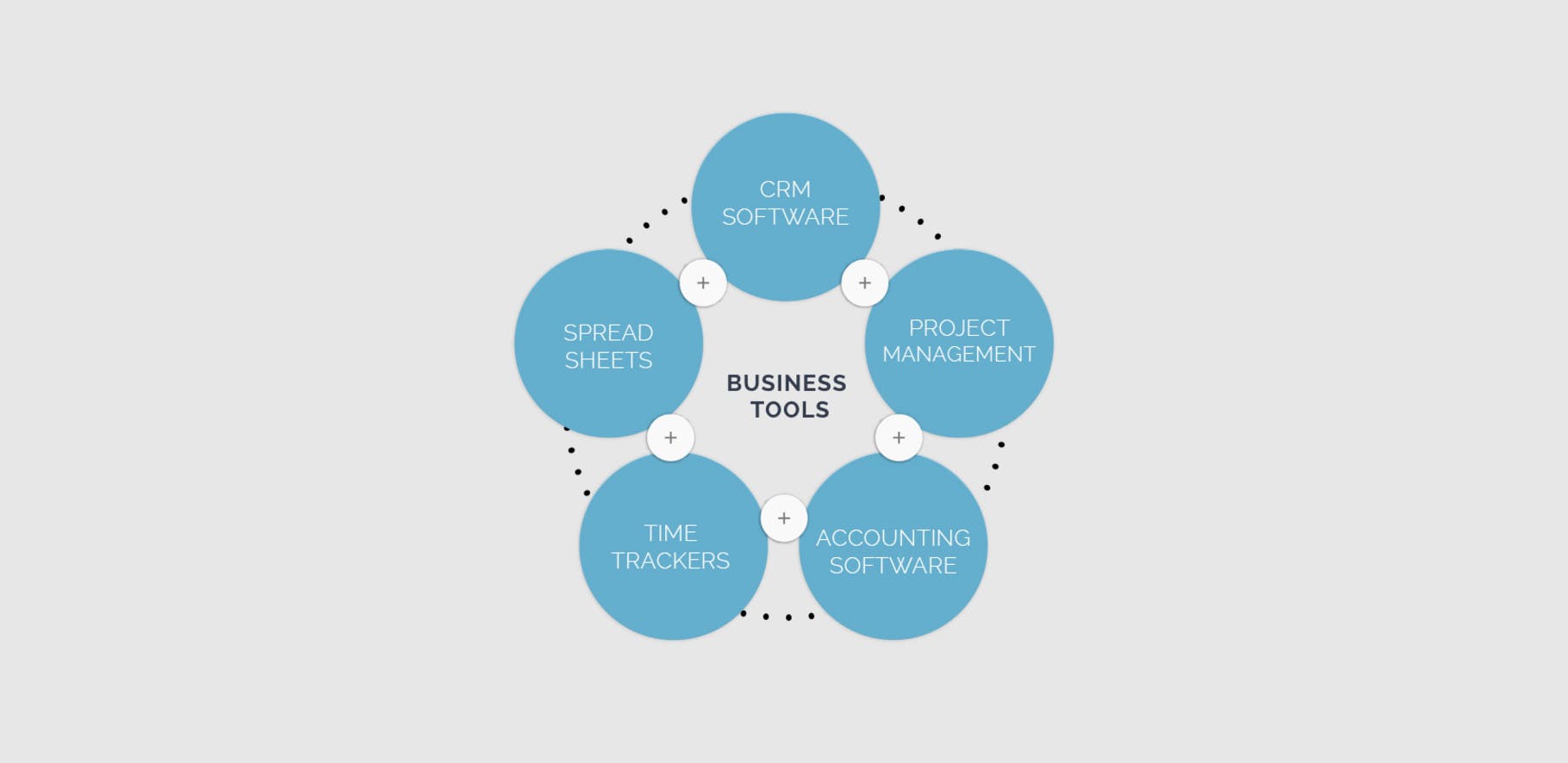Subscribe for updates from our blog so you don’t miss out:
In the last 10 years, there’s been a massive shift away from desktop software towards multiple SaaS applications delivered via the Cloud. Has this shift really left small business better off or has this revolution missed the mark?
The SaaS market of today allows businesses to put together their own systems customised from multiple best of breed applications which are then cobbled together to meet the software and data needs of a business. Whilst this revolution has ensured massive innovation in the software space with easier access to good software and instant gains, the revolution is not without its pains.
First of all when we talk about small business, we mean small business. Small business here is defined as any business employing between 2-15 employees. It’s also important to note that we’re coming from the perspective of services based businesses - because they are our customers - but it wouldn’t be a surprise to find the same results in organisations with different processes e.g. product/inventory style of business.
When building Roll, we went to our target market to better understand their pain points. This was purely so we could make Roll a better product that meets their needs - in true lean startup guise. The results of this research were very revealing and we uncovered some interesting facts, not all which bode well for the state of the current SaaS market.
Most of the businesses that we talked to (some 30+) were typified by a SaaS suite that often included 4, 5 or 6 different software products. These included a CRM tool, project management tool, communication tool, often a time tracking tool and on top of that a tool to manage their accounts. Whilst the combined costs of these products is no where near the cost of their ERP desktop contemporaries, the costs do add up. In some cases, in excess of $300 or $400 per month.
Not bad value if you’re getting an efficient solution that can run your business right? Well, no. In our experience and what our research revealed, this is where the big problem is.
Because these systems are all individual products, quite often any integration between them is basic at best. There is no clear flow of data from one product to another across the business. This relates directly to increased overhead in terms of data entry and importantly time. The bigger issue, however, is around the ability for these systems to provide business owners with clear and concise feedback on how their business is performing.
We call it the “visibility piece” and in most small businesses using SaaS tools, it’s missing and is major failing of todays model of individual applications managing each function of a business.
As a way of combating this major problem, businesses are still using spreadsheets to collate data from individual applications into an area where that data can be manipulated to provide the missing insights and visibility. Important information like cash flow and how a business is tracking for end of month invoicing; which projects are at risk and what resourcing requirements are potentially coming up. These important insights are all missing.
Whilst on the surface, the current trend of multiple deep and disparate products being used in each business seems like the best option, by it’s own design, it’s apparent that it's failing small business. By introducing unnecessary costs, inefficiency and by not being able to provide the overall visibility layer of what is happening within a business the current SaaS market is failing to live up to the hype of providing robust, low cost solutions that really meet the needs of small businesses.
